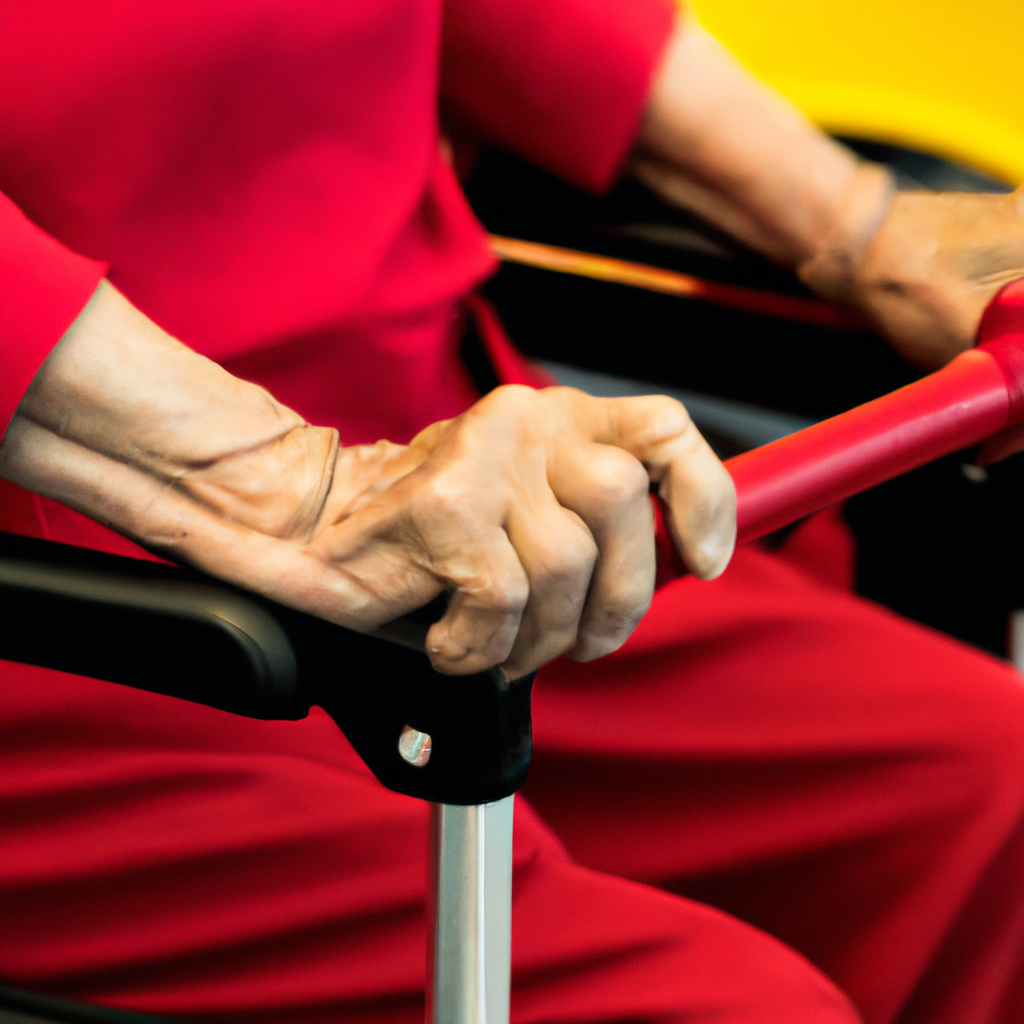As life expectancy continues to grow, an increasingly important issue is enhancing mobility and independence for older adults. It is understandable that as we age, we struggle with mobility issues due to weakened muscles and joints, as well as balance and coordination problems. This can lead to falls, accidents, and other complications that can impact our quality of life. Fortunately, there are measures we can take to support the mobility of our elderly loved ones and help them maintain physical independence for as long as possible. Continue reading to learn more about these strategies and how they can help improve the physical well-being of aging adults.
1. Promoting Independence in Elderly People: Achieving Mobility
Supporting elderly people to remain mobile and independent for as long as possible is an important part of maintaining quality of life. There are several ways that elderly people can become more independent and be able to enjoy the benefits of mobility.
Encouraging Exercise
Regular exercise has a range of benefits including, improved muscle strength and balance as well any increased mobility. Empowering elderly people to remain active can help them become more independent.
Physical activities don’t have to be a strain for the elderly person, there are many activities which can be tailored to different ability levels and can include some fun activities.
- Sports
- Gardening
- Nature activities
- Games
Making Fitting Adaptations
At home, it is important to consider and arrange for the necessary fittings and adaptations to ensure the safety and comfort of elderly people. Depending on the needs, this could include wheelchair ramps, handrails, and other equipment.
Using Mobility Aids
For those who need extra support, mobility aids such as wheelchairs, walkers, and scooters can be a reliable way to increase mobility. Whether elderly people require assistance from a caregiver or are able to manage on their own, having access to the the right aids can significantly increase their independence.
Supporting elderly people to remain active and independent is beneficial for their physical and mental health as well as providing them with greater opportunities for social interaction. It is important to remember that independence for elderly people looks different for every person, but with the right approach it can be achieved.
2. Challenges of Mobility for Elderly People
The elderly population can face a number of challenges when it comes to mobility. Many older people find themselves dealing with medical issues that affect their movement, such as joint pain, arthritis, balance issues, and even vision problems. Additionally, elderly individuals are more prone to falling and are less able to access different areas of their environment, such as stairs. It’s important for them to receive the support they need to stay independent and safe.
1. Accessible and Walkable Spaces
Most communities have not been designed to be accessible for elderly people. Many have narrow pathways, curbs that are challenging for those with mobility aids, and public transportation networks that are difficult to navigate. Added to that, many elderly individuals don’t have access to private vehicles. This means they are limited in the ways they can move around and participate in their community.
2. Poor Road Conditions
The roads elderly people take are often poorly maintained, filled with potholes, bumps, and other potential hazards. These conditions can cause damage to their vehicles and increase the risk of accidents. Furthermore, they often lack suitable signs or markers to direct those who have difficulty navigating their own town or city.
3. Aging-Related Challenges
As people age, their physical and cognitive abilities can decline, making it difficult to drive or even just walk around safely. This can be particularly challenging for those with cognitive issues such as dementia or a mental health condition like depression. Additionally, those in wheelchairs or other mobility devices often find it hard to move from place to place, due to uneven and inaccessible surfaces.
Conclusion
Overall, mobility can be a challenge for elderly individuals. It is important to ensure they have access to accessible and walkable spaces, safe roads, and proper support. Understanding and addressing the mobility needs of the older population can help them remain independent and safe.
3. Tips to Support Mobility in the Elderly Population
As we age, our bodies naturally start to become stiff, difficult to move, and less flexible. These changes make it increasingly important to have a strong focus on mobility as we get older. Here are just a few .
1. Stretching
Stretching is one of the easiest and most effective ways of supporting mobility. Whether it’s doing simple neck circles while watching TV or practicing a full yoga routine, making sure to stretch on a daily basis will help keep our muscles, tendons, and ligaments flexible and reduce pain.
2. Swimming
Swimming is the ideal form of exercise for those struggling with mobility issues. By suspending the body in water, you can move without grinding your joints, and the drag of the water actually works as resistance, strengthening muscles. Swimming is also beneficial for mental health, perfect for socializing, and suitable for all levels of physical fitness.
3. Strength Training
Regular strength training helps to build and maintain balance, coordination, and stability. It also strengthens the muscles that support your joints and boosts energy and endurance. If you haven’t done any strength training in a while, start with light weights and gradually increase the amount and type of activity over time.
4. Adequate Nutrition
No matter our age, adequate and healthy nutrition is important for overall health, including joint and muscle health. Eating plenty of antioxidant-rich plant foods, fatty fish like salmon and mackerel, and bone-strengthening magnesium-rich foods such as almonds and quinoa can help you maintain mobility.
4. Benefits of Boosting Physical Independence in the Elderly
An elderly population enjoys many advantages when it comes to retaining physical independence. Through regular exercise, they can improve strength and balance, make everyday activities simpler, and ultimately improve overall health. As a result, many organizations have put emphasis on the importance of physical independence for this generation. Here are just a few of the benefits associated with boosting physical independence in the elderly.
- Improves Quality of Life: Seniors who stay physically active can maintain a better quality of life, since exercise increases strength and balance while improving their energy levels. This can help them remain independent while tackling daily activities.
- Fights Age-Related Diseases: A regular exercise routine helps prevent age-related illnesses and improves the mental health of seniors, as well as reducing physical pain. This can be especially helpful for seniors who suffer from chronic conditions such as arthritis, diabetes, and hypertension.
- Boosts Mental Well-being: Exercise provides an outlet for stress, helping combat feelings of depression, anxiety, and insecurity that are common among the elderly. It also aids in promoting positive emotions, increased self-esteem, and improved cognitive functioning.
By introducing physical activity into their daily routine, seniors can reduce the risk of age-related diseases, as well as improve the quality of their life in a number of ways. With a proper exercise program, seniors can get the most out of their years and maintain their physical independence in their golden years.
Additionally, introducing physical activities that specifically target seniors can have a major positive impact. Such activities can include walking, gardening, and dancing, as well as strength and resistance exercises. All of these activities have been proven to reduce the factors mentioned above, while also decreasing loneliness, fatigue, and depression.
As with any physical health issue, aging comes with its challenges, but with the right support, older adults can remain physically active and independent. With increasing awareness of how to improve mobility in the elderly, more solutions are becoming available to aid in maintaining an independent lifestyle. Let’s be sure to support the elderly in their mobility journeys as they continue to cherish and enhance their physical independence.



